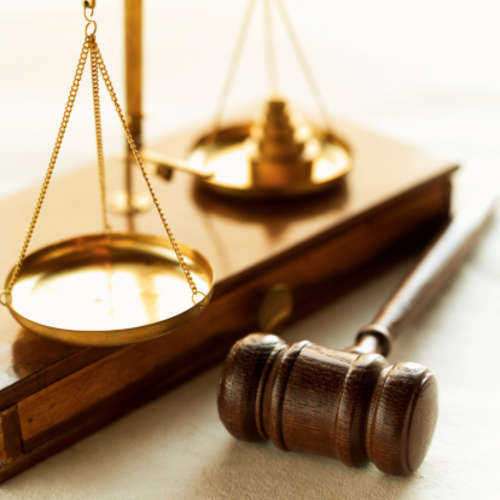What are the rights of victims?
Those that have been victimized are often scared and unsure of what to do next. It is very important to remain calm, contact the authorities and do nothing that will compromise evidence that will find and convict the criminal. Timing is essential in a criminal case and you must not delay in reporting the crime. The police will have professionals, most likely a detective that will be able to help you organize your thoughts and build a case. Cooperate with law enforcement and be truthful in your testimony at all times to avoid compromising the case. Do not fabricate or mislead the detectives as this will prevent them from giving your case proper credence.
What do I do immediately after a crime?
Obviously, this varies on the nature of the crime. In almost all cases, however, there will be a crime scene. You will need to preserve the crime scene by not touching any items, however important. Just a tiny sliver of DNA can be all that is needed to find a culprit. The need to preserve a crime scene applies, unfortunately, in rape and sexual assault cases and it is imperative that the victim not wash or clean after the attack. The police will get you to a hospital where the DNA will be collected and you will then be given the treatment you need for damage sustained, be it physical or emotional trauma.
Do not hesitate in calling the police after a crime. You may need to use a payphone, or the phone of a nearby merchant or passerby. Either way, the quicker the police get to the crime scene, the better the chance that the police will preserve evidence and even look for the suspect in the event that the suspect remains in the area.
What do I do if I am called to testify?
You must be truthful about the circumstances of the crime and recount the events of the crime to the court. You must answer questions posed to you, and you will be assisted, usually be an attorney if you choose to testify. You may alternatively make a written or recorded statement and have that statement presented on your behalf in court. Your participation in the trial will help you receive compensation and restitution from the criminal that caused you damages. The court will be able to protect you if you feel threatened in any way, as far as to relocate you, provide a protection detail and a assign new identity, if necessary.
What are my rights as the victim of a crime?
Speedy trial – all criminal cases must be brought to trial in a reasonable amount of time, generally a maximum of six months after the crime has been committed. This may be delayed to locate witnesses, but not to specifically benefit the prosecution. The victim of a crime has the right to be informed of the proceedings related to the criminal such as sentencing, arraignment and parole hearings.
Compensation – there will be a Crime Victims Board that will address financial relief to victims of a crime. Persons usually have one year to file for compensation when that are victims of a crime. States will vary on the amount of compensation that can be collected by there will be a few general categories:
– Loss of earnings
– Burial expenses of a victim that died as a result of the crime
– Cost of crime scene cleanup and initial securing of the crime scene
– Costs associated with seeking counseling and other medical expenses
– Repair and replacement of items damaged as a result of the crime
Enforcement – the victim has a right to know about actions taken against a criminal and actions that might reduce the penalty enforced on the criminal. This includes if the criminal becomes eligible for parole or release. Victims have a right to make victim impact statements at these hearings to sway the decisions of the law enforcement personnel as well as petition to keep enforcement on the criminal.
Harassment/Witness protection program – the victim or witness of a crime is protected against retaliation or harassment by the criminal as well as the criminal’s associates and relatives. A witness protection program generally changes the identification of a threatened witness and maintains dedicated a protection detail to safeguard their well-being. This prevents the possibility of witness intimidation or tampering.
There may be Federal and State protection programs. States that offer witness protection programs include Washington DC, Texas, California, Illinois, Connecticut and New York. The Federal Witness Protection Program covers these states plus any state that does not have such a program. Federal witness protection will entail relocation, assumption of a new identity and protection by the US Marshalls in high threat situations.
Special visas may be granted to victims of human trafficking or foreign witnesses that provide protection in exchange for testifying against a criminal.
Proceedings – victims and families of victims are allowed to provide dispositions on the case, regarding matters such as sentencing and restitution. In a criminal trial for any felony, the victim is allowed a victim impact statement and can address the court regarding the sentencing of the criminal.
Restitution – this is the right of the victim to be restored to the financial status they had prior to the crime. This is related to reparation, which is payments made to the victim for damages caused by the crime. All property held as evidence is returned to the victim, unless the court has a legitimate reason for withholding it.
Right to be informed – all victims of a crime are entitled to a free copy of the police report related to their incident. In addition, all victims of a crime receive access to the Victim Information and Notification Everyday (VINE) hotline where you may inquire about the status of an offender and the likely release date of that offender. The victim of a crime will be informed on a number of procedural matters related to the criminal and will also be informed if the criminal is released or escapes from prison.


























